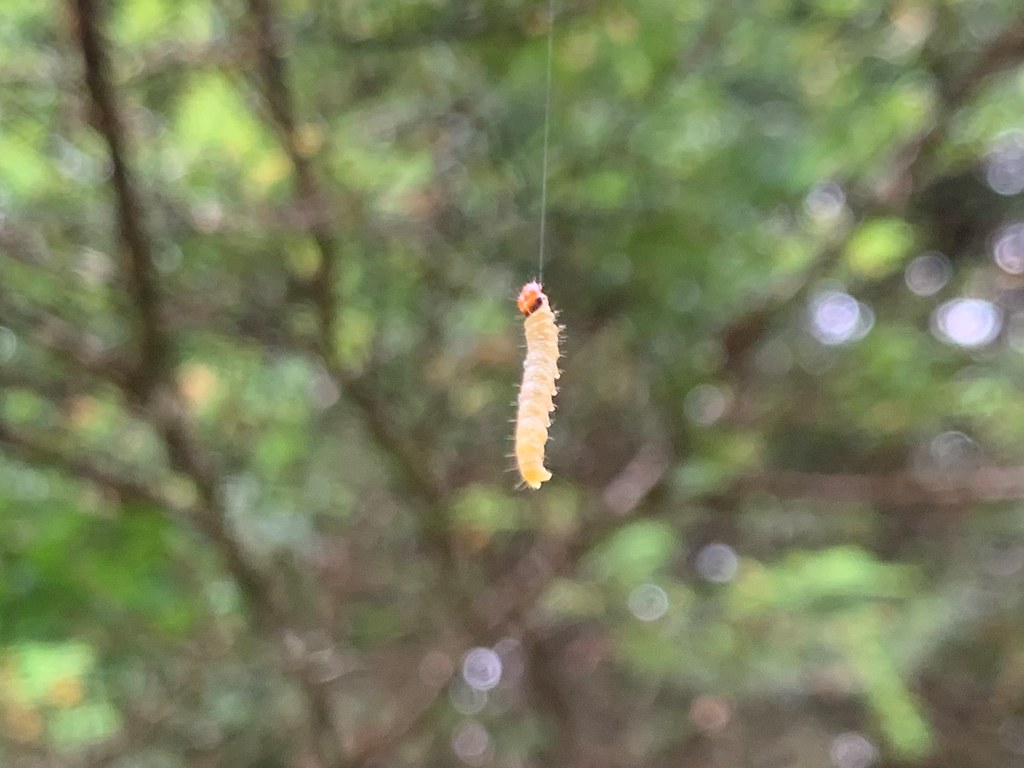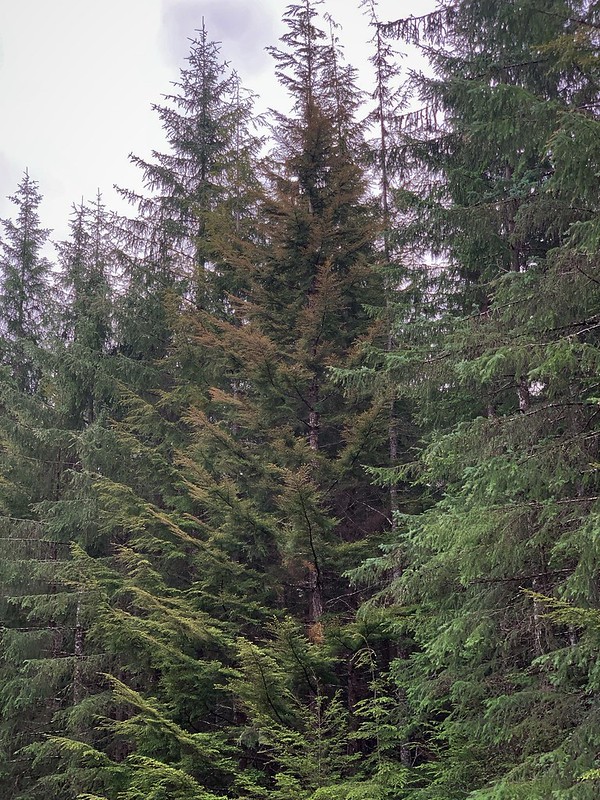
Wondering why the trees in Southeast Alaska are looking reddish-brown again this year? It’s because of an insect that feeds on treetops in the Tongass National Forest. The western blackheaded budworm starts its life as a caterpillar, boring through the new growth of hemlock and spruce trees. And if you look closely, you’ll see them.
“They will tie some of the needles together and create a nice little shelter so they can feed safely,” said Elizabeth Graham, an entomologist with the U.S.Forest Service. “But then once they’ve moved down and are ready to find a new spot to feed, they may drop down on silk threads.”
The budworms show up in a natural, recurring cycle every 30-40 years, and are part of the temperate rainforest’s ecosystem. The last major outbreak was from 1992 to 1995. Although it damaged some trees and even killed others, Graham says the forest always bounces back. Many of the trees in Southeast’s forests are several hundred years old and have survived several budworm infestations. In fact, the budworms and their excrement, or frass, play an important role.
“They’re kind of thinning the trees a little bit,” said Graham. “They’re opening up the canopy, allowing extra light to reach the forest floor. All of that caterpillar frass that’s falling down on people’s decks everywhere, it’s actually great fertilizer.”

Graham says this summer’s unusually warm weather is probably not related to the budworm outbreak. In fact, she was hoping that the winter weather would have a bigger effect on their numbers.
“One of the things that can impact their populations is snow load,” she said. “Because they will lay their eggs on the undersides of tree needles and the snow can actually strip them off. And since we had so many snow events this winter, I was hoping that maybe it would have a small impact, but definitely not one I’m able to notice here.”
This outbreak was first reported in 2020, and since outbreaks normally last a few years, Graham hopes it will die down next year. The Forest Service will conduct aerial surveys in late July, scanning the forest for reddish-brown trees to assess the current extent.
Meanwhile, the agency is collecting data from the public. Forest visitors are encouraged to upload photos, video, or information related to sightings of the western blackheaded budworm to the app iNaturalist. Uploaded data will automatically be included in the Alaska Forest Health Observations Project.
Starting in late August, the budworms will emerge from their needle shelters as colorful moths.









